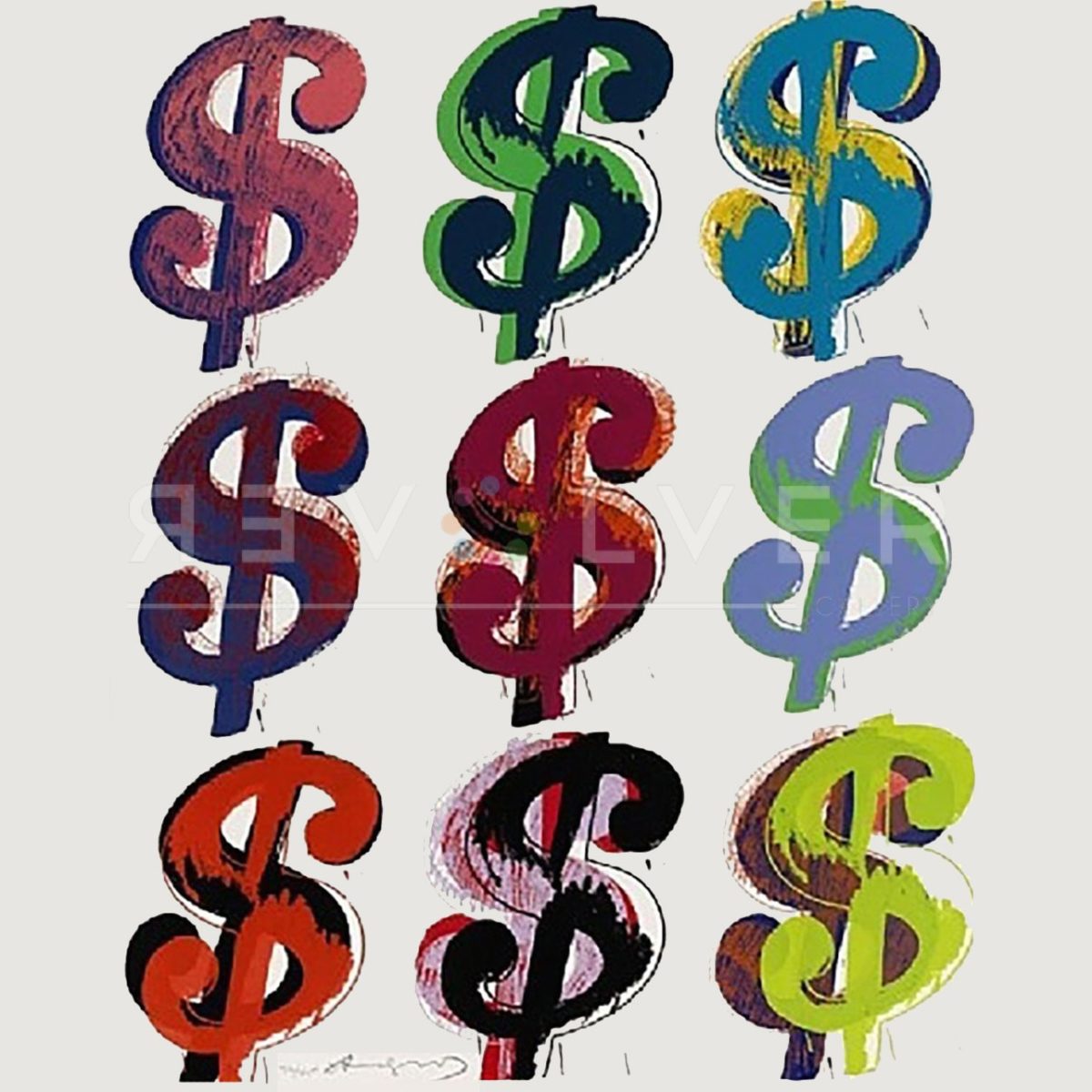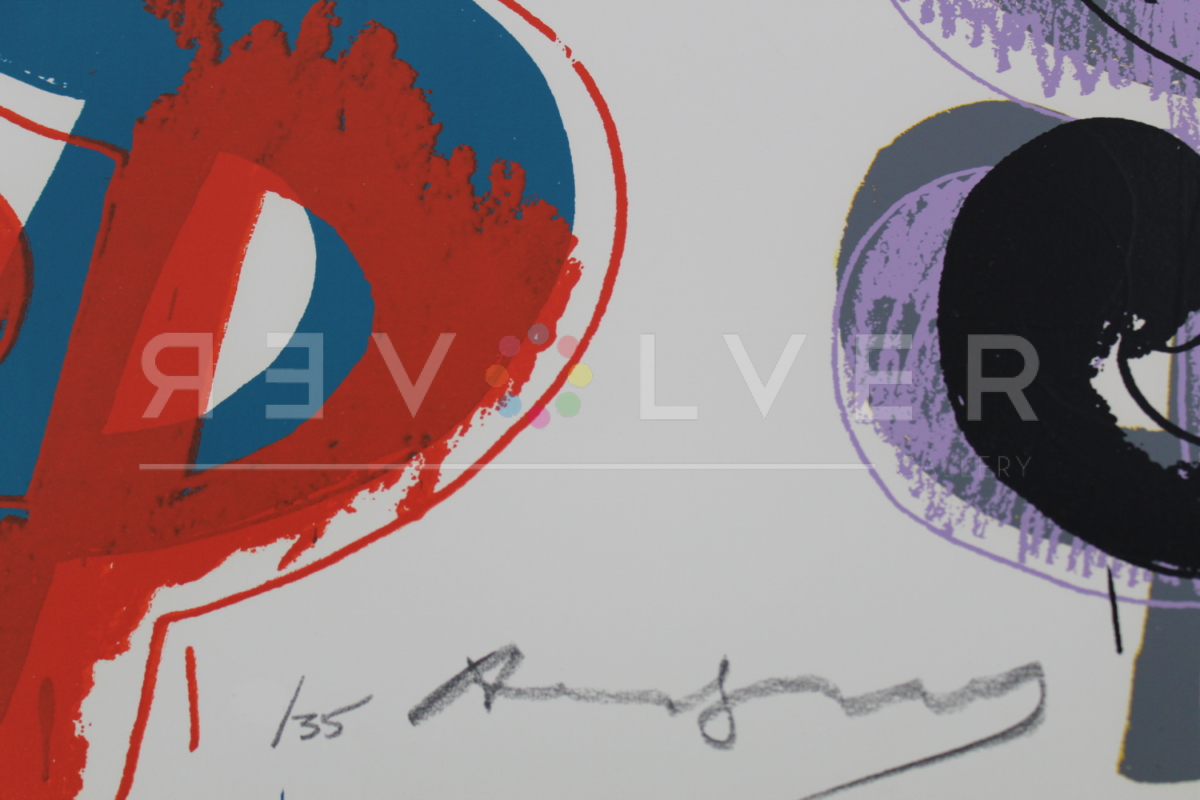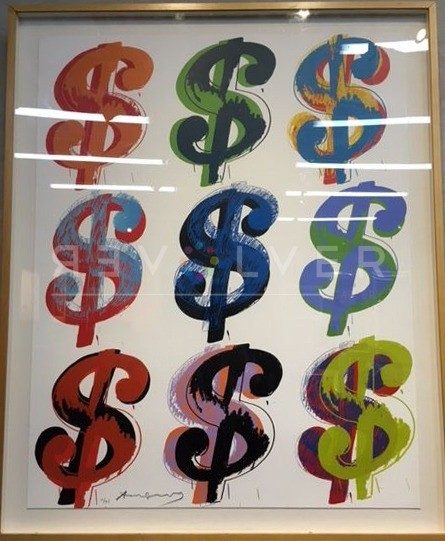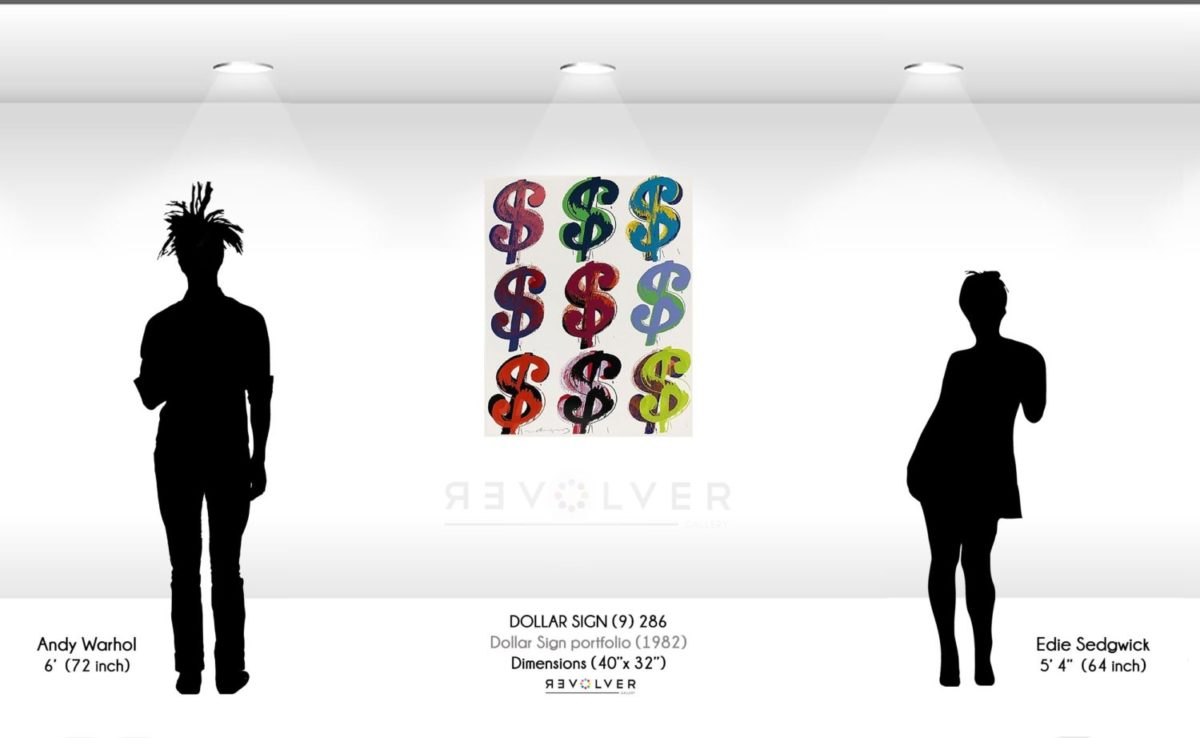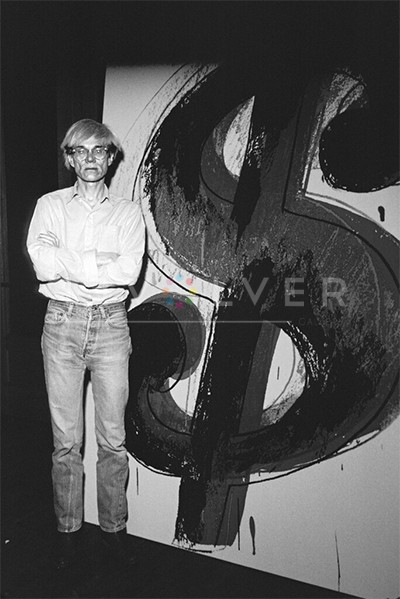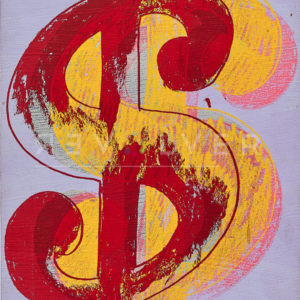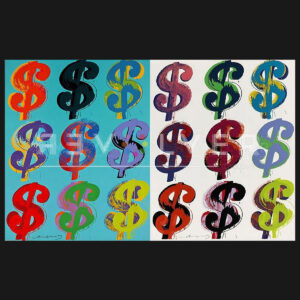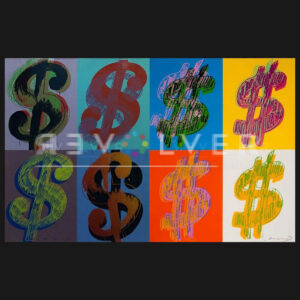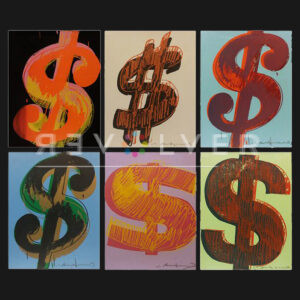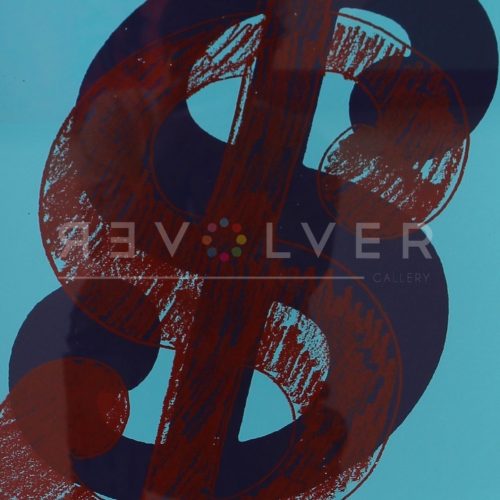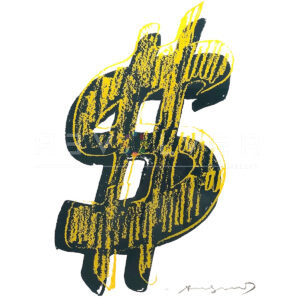Dollar Sign (9) 285 by Andy Warhol is a screenprint and representative work in his Dollar Sign (9) portfolio from the larger Dollar Sign series. This stirring, if not suggestive, portfolio shows the impact of wealth, materialism, and consumerism on American culture. It shows the same impact on Warhol himself, making the Dollar Signs some of Warhol’s most personal works. Dollar Sign is a cerebral collection that emphasizes money as true art. As Warhol famously said, “I like money on the wall,” comparing the value of an actual dollar bill to that of a hanging work of art.
Dollar Sign (9) 285 portrays nine graphic dollar signs in a 3 x 3 network. Warhol pairs different, contrasting sets of bold colors in each sign, unifying a few of them with a small amount of a third color found elsewhere in the work. This variety of colors and their organization against the pastel pink background both connect and individualize the dollar signs, as well as heighten their multidimensional illusion. Warhol actualizes these three-dimensional shapes by layering the colorful icons above lighter, sketch versions of the dollar sign motif. He finalizes the effect with a few small sketch marks beneath the motifs for depth and movement. Like his single icon screen prints Dollar Sign (ca. 1981), Warhol emphasizes the significance of money but relies on repetition over size to emphasize it’s quantitative power.
Dollar Sign (9) 285 utilizes a motif of repetition found in Warhol’s earlier works like Campbell’s Soup Cans and Coca-Cola Bottles from the 1960’s. There are iconographical similarities between all the works, which celebrate the profound power of recognition and symbolism of everyday objects on consumer lives. Warhol’s 200 One Dollar Bills (created during the same era as his soup cans) follows this pattern of object recognition even more than Dollar Sign. Though Dollar Sign (9) 285 also alludes to money and it’s ubiquity in society and art, it diverges from his past works by prioritizing the intangible authority of money, even as just a sign (versus the actual bill itself).
Dollar Sign establishes a shift in Warhol’s style as well. The motif of the s-curve dollar symbol in Dollar Sign (9) 285 is one of many dynamic shifts he made entering the autumn of his career. Though Warhol continued to use trademark bold colors and Pop Art style in this series, it also marks one of the first occasions he used his own imagery in his prints. Culturally, the 1980’s were an important influence on both this iconographical and stylistic shift because of American economic success and booming consumerism from the Reagan presidency.
Dollar Sign (9) 285 stretches Warhol’s boundaries beyond celebrity and object-driven iconography. It is a conceptual and individualistic piece; one that creates compelling arguments and reflects on a country’s ideology during a new decade.
Photo credit: Andy Warhol with Dollar Sign painting, New York, 1982. Image: © Santi Visalli, Artwork: © 2022 The Andy Warhol Foundation for the Visual Arts, Inc. / Licensed by DACS, London

